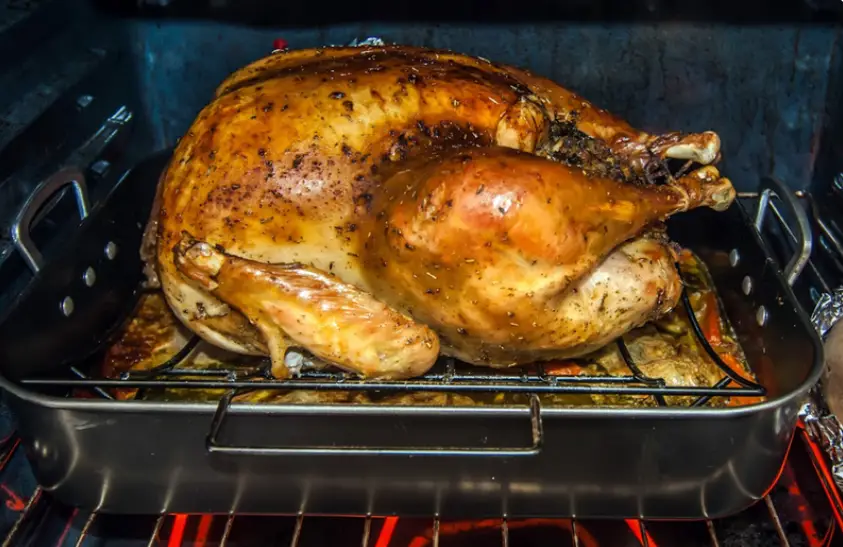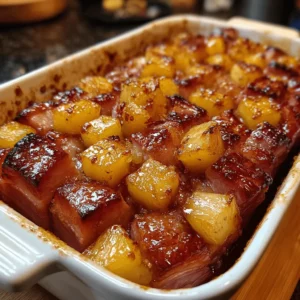Introduction to Turkey Injection
Turkey injection is a culinary technique that involves injecting a flavored liquid, often a mixture of broth, spices, and other flavor enhancers, directly into the meat of a turkey. This method is particularly popular in preparing turkey for roasting, smoking, or frying. The primary goal of turkey injection is to infuse the meat with rich flavors and to ensure that every bite is juicy and delicious. Unlike traditional marinating, which only season the surface of the meat, injection delivers the flavor deep into the turkey, ensuring a more consistent and pronounced taste throughout. This technique is especially beneficial for large birds like turkeys, where seasoning the interior can be challenging. By injecting, cooks can ensure that the flavors permeate beyond the surface, reaching the deeper layers of the meat.For more insights on the effectiveness of this technique, see The Spruce Eats.
Moisture Retention
One of the key benefits of injecting a turkey is the enhanced moisture retention it offers. Turkey, particularly the breast meat, is notorious for drying out during cooking. By injecting the bird with a flavorful liquid, you are essentially ensuring that the interior of the turkey remains moist and tender. This is because the injected liquid distributes moisture throughout the meat, helping to keep it juicy during the lengthy cooking process. This technique is particularly useful for methods like roasting or smoking, where the meat is exposed to heat for extended periods.
Flavor Infusion
Apart from moisture, flavor infusion is another significant advantage of turkey injection. The injected liquid is usually a blend of various seasonings and flavors, which permeates through the meat, ensuring that every bite is packed with taste. This method allows for a more controlled and even distribution of flavors as compared to surface seasonings or marinades. The flavors infused by injection can range from traditional herbs and spices to more creative combinations like garlic butter, Cajun, or sweet and savory mixes. This versatility in flavor options makes turkey injection a preferred method for many cooks who want to experiment with different taste profiles and create a unique culinary experience.
For those interested in exploring other flavorful poultry dishes, our Chicken Cobbler Recipe offers a delightful and comforting experience.
The Right Ingredients for Turkey Injection
When it comes to turkey injection, the choice of ingredients plays a pivotal role in determining the flavor and quality of the final dish. The ingredients typically used in injection recipes can be broadly categorized into three groups: liquids, fats, and seasonings.
Liquids
The liquid base is crucial as it carries the flavors into the meat and helps keep it moist. Common choices include chicken or turkey broth, which offers a natural and complementary flavor to the turkey. Some recipes may use wine, beer, or fruit juices for a more unique taste profile. The key is to choose a liquid that pairs well with the overall flavor theme you are aiming for.
Fats
Fats like butter are often included in injection recipes for their ability to enhance flavor and moisture. Butter, in particular, is a popular choice due to its rich taste and the creamy texture it imparts. It also helps to distribute the flavors throughout the meat. For a healthier option, olive oil can be used as it provides a subtle flavor and is high in monounsaturated fats.
Herbs and Spices
Herbs and spices are what truly define the character of your turkey. Common herbs include thyme, rosemary, and sage, which offer a traditional poultry seasoning. Spices like garlic powder, paprika, or cayenne can add depth and heat. The key is to balance the flavors, ensuring that no single ingredient overpowers the others. Fresh herbs can provide a more vibrant flavor, while dried herbs and ground spices are more concentrated and easier to inject.
Essential Equipment for Turkey Injection
To effectively inject a turkey, certain tools are essential, with the meat injector being the most important.
Meat Injectors
A meat injector, essentially a large syringe with a needle, is used to puncture the turkey’s skin and deliver the injection liquid into the meat. Injectors come in various sizes and materials, with stainless steel being a preferred choice for durability and ease of cleaning. The needle should be sharp enough to easily penetrate the meat and have holes along its length to evenly distribute the injection liquid.
Additional Tools
Other helpful tools include mixing bowls for preparing the injection liquid, measuring cups and spoons for precise ingredient measurements, and a whisk or blender for thoroughly mixing the injection solution. It’s important that the solution is smooth and free of large particles, which can clog the injector needle.
Having the right equipment on hand simplifies the process and ensures that the turkey is evenly and effectively injected, leading to a flavorful and juicy result.
Basic Turkey Injection Recipe
Creating a basic turkey injection recipe is a straightforward process that involves combining a liquid base with fats and seasonings to infuse the turkey with moisture and flavor. Here’s a simple yet effective recipe:
Ingredients:
- 1 cup chicken or turkey broth
- 1/2 cup melted unsalted butter
- 1 tablespoon garlic powder
- 1 tablespoon onion powder
- 1 teaspoon dried thyme
- 1 teaspoon dried sage
- Salt and pepper to taste
Instructions:
- Combine Ingredients: In a mixing bowl, whisk together the chicken or turkey broth and melted butter. This forms the liquid base of your injection marinade.
- Add Seasonings: Stir in garlic powder, onion powder, thyme, sage, salt, and pepper. Mix well until all the ingredients are thoroughly combined.
- Strain the Mixture: To ensure the mixture is smooth and free of lumps, strain it through a fine mesh sieve. This step is crucial to prevent the injector needle from clogging.
- Inject the Turkey: Fill the meat injector with the marinade. Inject the turkey in several places, especially the breasts, thighs, and legs, distributing the marinade evenly throughout the meat.
- Marinate: Allow the turkey to marinate for at least a few hours, preferably overnight, in the refrigerator for the flavors to fully infuse.
This basic recipe is designed to enhance the turkey’s natural flavors without overpowering it, making it an excellent choice for those who prefer a more traditional taste.
Advanced Variations and Flavors for Turkey Injection
For those looking to experiment with more complex flavors, here are some advanced variations:
Cajun Injection
Ingredients:
- 1 cup beer or chicken broth
- 1/2 cup melted butter
- 1 tablespoon Cajun seasoning
- 1 teaspoon paprika
- 1 teaspoon cayenne pepper
- 2 tablespoons Worcestershire sauce
- Salt to taste
Instructions:
Follow the basic recipe instructions, substituting the liquid base and seasonings with the above ingredients. This variation adds a spicy and robust Cajun flavor to the turkey.
Garlic-Herb Injection
Ingredients:
- 1 cup olive oil
- 1/4 cup lemon juice
- 1 tablespoon minced garlic
- 1 tablespoon chopped fresh rosemary
- 1 tablespoon chopped fresh thyme
- Salt and pepper to taste
Instructions:
Combine the olive oil and lemon juice as the base. Add in the fresh herbs and garlic. This recipe is perfect for those who prefer a fresh, herbaceous flavor profile.
Sweet and Savory Injection
Ingredients:
- 1 cup apple cider
- 1/2 cup maple syrup
- 1/2 cup melted butter
- 1 teaspoon cinnamon
- 1 teaspoon ground ginger
- Salt to taste
Instructions:
Mix the apple cider and maple syrup for a sweet base, then add the spices and butter. This variation offers a unique sweet and savory experience, ideal for holiday meals.
Each of these advanced recipes provides a different flavor profile, allowing for customization based on personal preferences or specific occasions. Experimenting with various ingredients can lead to discovering your perfect turkey injection recipe.
Do’s and Don’ts of Turkey Injection
Do’s:
- Do Use a Fine Needle: Ensure your injector needle is fine and sharp to evenly distribute the marinade and avoid large puncture holes in the turkey.
- Do Strain Your Marinade: Always strain the marinade to remove any solid particles that could clog the injector.
- Do Inject in Multiple Spots: Inject the turkey in several places, especially in thick meat areas like the breasts and thighs, to evenly distribute the flavors.
- Do Allow Time for Marination: After injecting, let the turkey marinate for a few hours, ideally overnight, to allow the flavors to fully penetrate the meat.
- Do Experiment with Flavors: Don’t be afraid to try different marinade recipes to find the one that best suits your taste.
Don’ts:
- Don’t Over-Inject: Injecting too much liquid can cause the meat to become soggy or the flavors to be too intense.
- Don’t Ignore Safety: Always handle the injector with care to avoid injury and ensure the turkey is properly refrigerated during marination to prevent bacterial growth.
- Don’t Inject Just Before Cooking: Injecting immediately before cooking doesn’t give the flavors enough time to infuse into the meat.
- Don’t Forget to Cook Properly: An injected turkey still requires proper cooking techniques to ensure it’s cooked thoroughly and evenly.
Cooking Tips for Turkey Injection
Preparing for Cooking:
- Bring to Room Temperature: Before cooking, let the turkey sit at room temperature for about an hour. This helps in cooking the turkey more evenly.
- Pat Dry the Skin: Pat the outside of the turkey dry with paper towels. This helps in achieving a crispier skin during roasting.
Cooking Methods:
- Roasting: Roast the turkey in a preheated oven at 325°F (165°C). The general rule is to cook for about 15 minutes per pound, but always use a meat thermometer to ensure the internal temperature reaches 165°F (74°C) in the thickest part of the thigh.
- Frying: If deep-frying, ensure the turkey is completely dry to prevent oil splatter. Cook in oil at 350°F (175°C), typically 3-4 minutes per pound.
- Smoking: For smoking, maintain a temperature of around 225-250°F (107-121°C) and cook for 30-40 minutes per pound. Use a meat thermometer to check for doneness.
Post-Cooking:
- Rest the Turkey: After cooking, let the turkey rest for at least 20 minutes before carving. This allows the juices to redistribute throughout the meat, ensuring a moist and flavorful turkey.
- Carve Properly: Carve the turkey correctly to ensure each slice contains some of the injected flavors.
Looking for the perfect drink to complement your turkey meal? Our Vegas Bomb Recipe is the ultimate guide to mixing, sipping, and enjoying a vibrant taste that pairs wonderfully with a well-cooked turkey.
FAQ’s
Can I inject a turkey the night before cooking?
Yes, injecting a turkey the night before is actually recommended. This allows ample time for the flavors to penetrate and infuse the meat, resulting in a more flavorful turkey.
How many injections should I use for my turkey?
A general guideline is to use approximately 1 ounce of injection marinade per pound of turkey. However, be careful not to over-inject, as this can make the meat soggy.
Can I use my turkey injection recipe for other meats?
Absolutely! Turkey injection recipes can often be used for other poultry like chicken or even for pork. The key is to ensure the flavors complement the type of meat you are preparing.
What do you inject turkeys with?
When injecting a turkey, you typically use a marinade made from a combination of liquids, fats, and seasonings. Here’s a brief overview:
- Liquids: The base of the injection marinade is usually a liquid such as chicken or turkey broth, which complements the turkey’s natural flavors. Some recipes may use wine, beer, or fruit juices for a unique twist.
- Fats: Fats like melted butter or olive oil are often added to the marinade. Butter is popular for its rich flavor and ability to help distribute the marinade evenly throughout the meat.
- Seasonings: This includes a variety of herbs and spices. Common choices are garlic powder, onion powder, thyme, sage, salt, and pepper. The specific herbs and spices can be adjusted based on personal preference and the desired flavor profile.
How soon should you inject a turkey before cooking?
As for the timing of injection, it’s generally best to inject the turkey at least a few hours before cooking, and ideally, you should do it the night before. This allows enough time for the flavors to fully penetrate and infuse the meat, enhancing the overall taste and juiciness of the turkey. Injecting too close to cooking time doesn’t give the flavors sufficient time to meld and distribute throughout the turkey.




1 thought on “Turkey Injection Recipe: Enhance Your Holiday Feast”